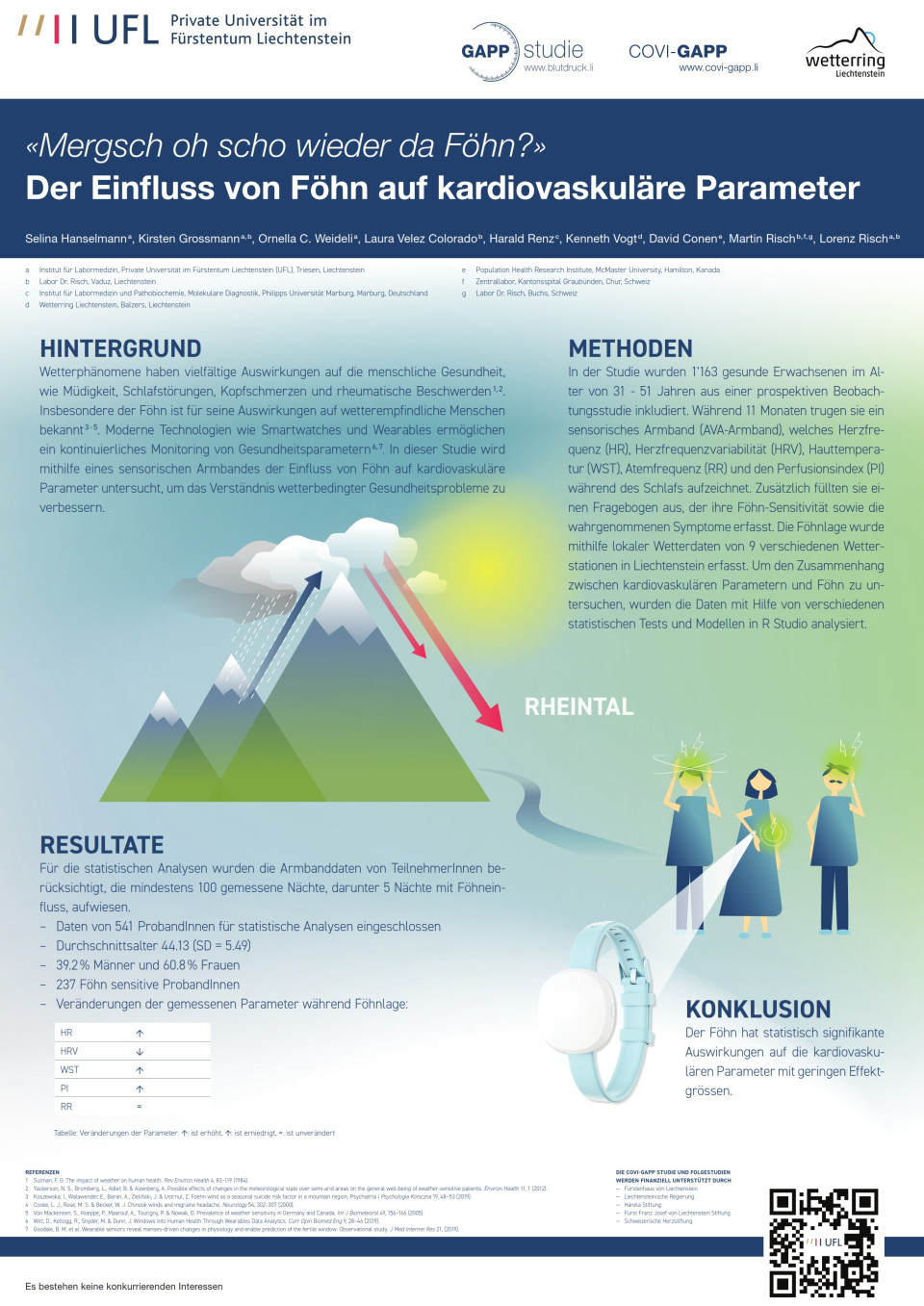Background
It is well established that weather phenomena, particularly extreme weather conditions, can significantly impact human health, with fatigue, sleep disturbance, headache, and rheumatic pain being the most reported symptoms. Individuals who experience such symptoms due to weather phenomena are therefore termed "weather-sensitive".
Alpine regions are susceptible to foehn winds, which are strong, warm, and dry leeward winds that are known to trigger various symptoms in "weather-sensitive" individuals. Studies have demonstrated a correlation between foehn periods and an increased incidence of headache, pain, fatigue, and even severe traumas. In recent years, wearable devices, which allow continuous tracking of cardiovascular parameters, have revolutionized health monitoring. They therefore provide a novel approach to study physiological impacts of extreme weather events in real-time. Such extreme weather events are increasing due to climate change and therefore, it is important to understand the health effects associated with these conditions. The aim of the present study is to address the current lack of data on the impact of the foehn winds on cardiovascular parameters by using wearable data.
Objectives
The primary objective of this study is to investigate the association between foehn winds and changes in cardiovascular parameters, including respiratory rate (RR), heart rate (HR), heart rate variability (HRV), and wrist skin temperature (WST), recorded by a wearable medical device in a young and healthy population. The secondary objective is to assess whether foehn winds have an impact on cardiovascular parameters (RR, HR, HRV, WST) of those individuals who self-identify as "weather-sensitive".
Methods
A total of 1,163 healthy adults participated in the COVI-GAPP study. In this study, participants wore a CE-certified and FDA-approved sensory bracelet (AVA) that measured seven health parameters during sleep. Initially designed as a fertility tracker, the AVA-bracelet recorded respiratory rate (RR), heart rate (HR), heart rate variability (HRV), wrist skin temperature (WST), and sleep quantity and quality. Data were collected over the course of 11 months. Meteorological data, including the number of foehn days, wind speed, and air pressure, were obtained from nine weather stations across Liechtenstein. These data were used to calculate the foehn index, which is defined as 0 = no foehn, 1 = mixed air (when foehn evolves), and 2 = foehn. These two main data sets will be used for the current study. Initially, descriptive analyses will be conducted to examine the distributions of the variables under consideration and their variances between different population subgroups. To address the research questions, linear mixed effects models will analyse the associations between cardiovascular parameters and foehn, controlling for several demographic covariates. The statistical analyses will be performed using R Studio.
Results
Health data were collected between May 2020 and March 2021, resulting in a total of 1,453,006 recorded hours. Out of the 1,163 recruited participants, 970 wore the AVA bracelet for at least one night. Participant’s age ranged from 31 to 51 years with a mean age of 43.28 years (SD = 5.48). Of these participants, 40% (n = 388) were male and 60% (n = 582) were female. Further results will be available in the coming months.
Next steps
Over the next weeks, the data will be preprocessed, after which the statistical tests outlined in the methods section will be conducted over the subsequent two to three months. The results of our study will be discussed and used to draw conclusions that may provide new insights into the physiological impact of foehn winds on cardiovascular parameters in both the general population and people who self-identify as "weather-sensitive".
Quiz question
Welche Parameter wurden mithilfe eines sensorischen Armbands während des Schlafs gemessen?
Herzfrequenz, Herzfrequenzvariabilität, Hauttemperatur, Atemfrequenz und Perfusionsindex
Herzfrequenz, Blutdruck, Körpertemperatur, Sauerstoffsättigung und Atemfrequenz
Blutzuckerspiegel, Hauttemperatur, Sauerstoffsättigung und Atemfrequenz
